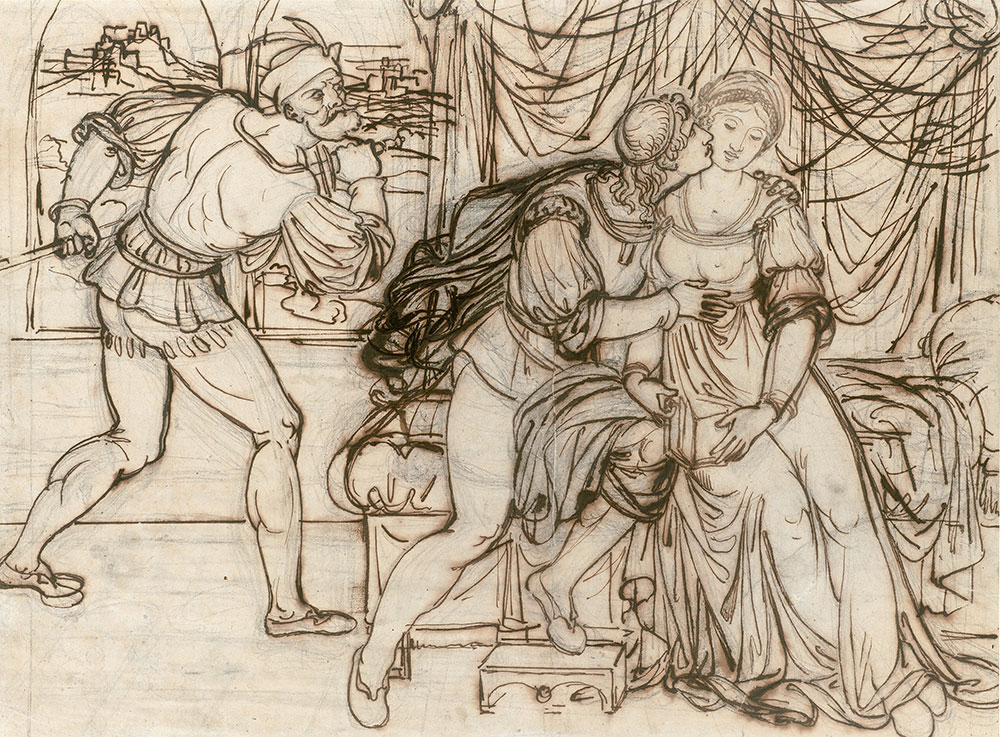
Dante Alighieri’s Divine Comedy, one of the most important works of medieval literature, was first translated into German at the turn of the nineteenth century. It immediately became a rich source of inspiration for Romantic artists; Koch alone produced over two hundred drawings and a large number of prints illustrating the text. In this sheet, the artist focused on the tale of Francesca and Paolo, who fall in love upon reading the story of the legendary knight Lancelot. While the couple is gently embracing in Francesca’s bedchamber at right, the left side of the composition is dedicated to the enraged, seething figure of Gianciotto— Francesca’s husband and Paolo’s brother—who has just discovered the illicit affair.
Joseph Anton Koch
Austrian, 1768–1839
Paolo and Francesca, 1802–5
Pen and brown ink over graphite pencil
Kupferstich-Kabinett, Staatliche Kunstsammlungen Dresden, INV. NO. C 1908-289
© Kupferstich-Kabinett, Staatliche Kunstsammlungen Dresden
Photo: Herbert Boswank
Ian Hicks, Moore Curatorial Fellow
In addition to being one of the most important landscape painters of the early nineteenth century, Joseph Anton Koch was a writer and prolific draughtsman. After initial training in Stuttgart during his late teens and early twenties, the artist travelled to Switzerland to sketch the Alpine landscape. In early 1795, when he was twenty-six, the artist relocated to Italy. There, in addition to his heroic landscape paintings, Koch increasingly made figurative drawings, taking inspiration from classical, Medieval, and eighteenth-century literature.
In this drawing, we see the artist’s interest in literary narratives, namely his fascination with Dante’s Divine Comedy. The famous narrative poem was first translated into German at the turn of the nineteenth century and would become hugely influential for Romantic artists, including Koch, who produced over two hundred drawings related to the text. The artist here illustrates a scene from the ill-fated story of Francesca and Paolo, who fell in love with each other upon reading the story of the legendary knight Lancelot. The artist shows the moment when the lovers’ longstanding affair is discovered by Gianciotto – Francesca’s husband and Paolo’s older brother – who reaches to draw his sword before slaying the couple. The draughtsman’s pen brings a linear clarity to his more exploratory and energetic graphite sketch below. Though the figures are characterized by this precise approach with the pen, the agitated mass of Paolo’s cape and the more boldly rendered bed canopy lend the scene a dynamic charge.
